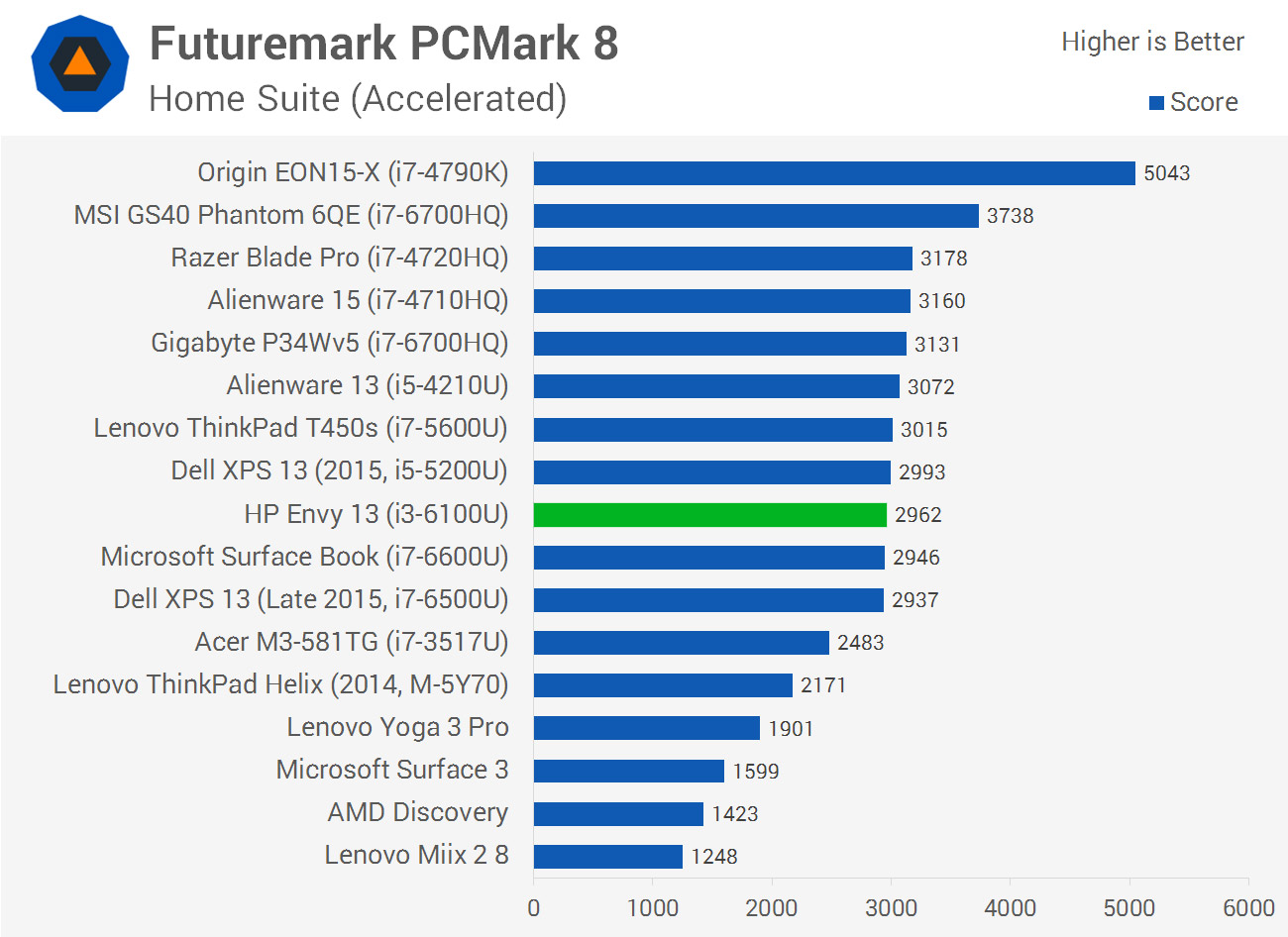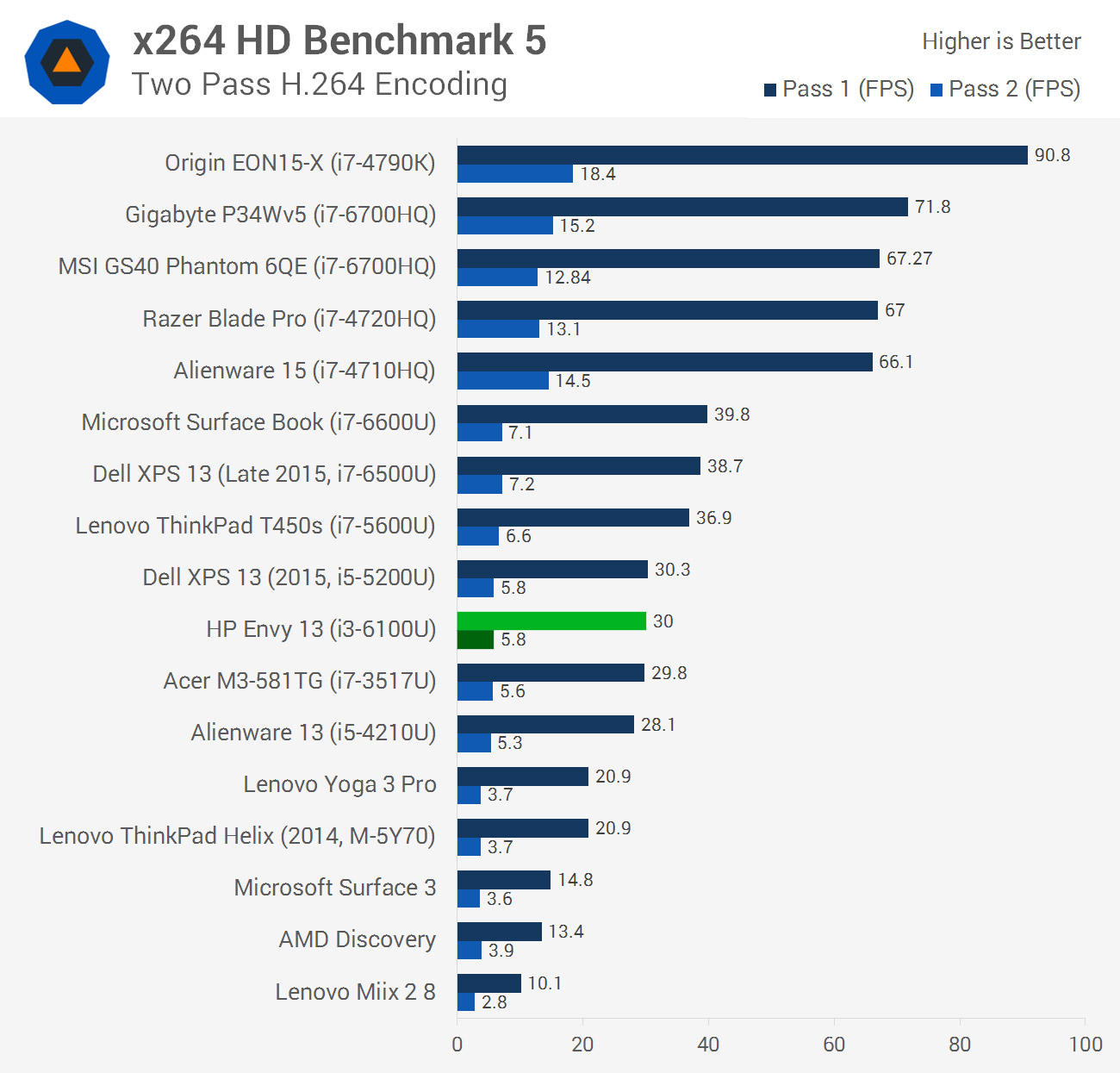HP Envy 13 Review > Hardware Overview and Core i3 CPU Performance - whitesideitere1944
Hardware Overview and Essence i3 CPU Performance
The Envy 13 comes in a rank of different models, and the one I received today is the cheapest of the parcel out. It features an Intel Core i3-6100U processor, just 4 GB of Random-access memory, a 128 GB whole state drive, and a 13.3-inch 1080p display. This simulation isn't accessible in the United States, and instead you'll find it mostly in Europe and Asia.
Even though this laptop International Relations and Security Network't available in the US, IT provides an riveting check over Intel's Core i3-6100U and the limitations that 4 GB of RAM provides in cheaper systems. The Core i3-6100U is particularly interesting as it's still a 14nm Skylake dispense with two cores, quatern threads and a 15W TDP, but information technology lacks Turbo Boost technology, meaning its time pelt along is limited to 2.7 Gigacycle per second. In comparison, the Core i5-6200U that's available on US models is clocked at 2.3 Gigahertz with a Turbo Supercharge of 2.8 GHz.
The Heart i3-6100U too features 3 Megabyte of L3 cache, and an Intel HD 520 nontextual matter core clocked busy 1000 MHz. The HD 520 is old across most of Intel's U-series peregrine parts, so its performance North Korean won't differ greatly from Core i5 and Center i7 SKUs.

For form options, this is what you can expect from the Envy 13 line-up:
- Core i3-6100U – 4 GB of RAM – 128 GB storage: £499 (approx. US$590 assess free) - Reviewed
- Core i5-6200U – 8 Gi of RAM – 128 GB store: $799
- Core i7-6500U upgrade: +$120
- QHD+ display upgrade: +$50
- 256 GB SSD upgrade: +$130
- 512 Gilbert SSD upgrade: +$330
This means that if you privation the top-end model with a Core i7 C.P.U., QHD+ display and 512 Britain of store, you'll be look spending $1,299.
Information technology should be noted that thither are nobelium options to add in more RAM, and as the RAM is soldered onto the mainboard, you cannot simply disassemble the Invidia 13 and add up in Sir Thomas More RAM. This is crucially burning if you buy the small 4 GB model; if you want more RAM, bribe the 8 GB variation.
And so how does the Core i3 CPU and 4 GB of RAM stack up? Well, for everyday tasks like web browsing and papers editing, I didn't very notice any performance differences betwixt the Enviousness 13 and something more omnipotent like Microsoft's Surface Book. The Envy boots up quick, opens apps quickly, and didn't seem to get bogged polish even when using Chrome with a handful of tabs open.

Where the system of rules struggles is in more constructive tasks comparable redaction photos in Photoshop. The Core i3 CPU doesn't appear to be the issue here, rather the incomprehensive amount of RAM that can seriously limit the performance of the system during a long session of Lightroom photo editing. When dealing with too large photos (or 1080p videos) in particular, 4 Gigabyte of Ram just doesn't cut it. Give up some multi-tasking with Chrome and you'll be begging for 8 GB of Aries the Ram.
And this is where the trade-off lies. If you wishing a PC for WWW browsing, document editing, and other light tasks, the unveiling-level Envy 13 with a Core i3 and 4 G of Drive in will be very well. But if you plan on using other, more intensive applications, I'd recommend spending the extra cash on the Core i5/8GB pose.
How does the Core i3-6100U stack up in benchmarks? Rent out's take a look for:







In PCMark, the Core i3 Envy 13 sits sporting behind other Skylake U-series based laptops along average. The Envy comes in well behind the Surface Book and XPS 13 in the Inventive suite in particular, which doesn't surprise due to ironware limitations.
There is a sizable gap in performance 'tween the Core i3 Envy 13 and the Core i7 Surface Book in encoding benchmarks, although this can live attributed to the large difference in clock speeds (3.4 GHz Turbo versus 2.7 GHz). The Core i3 also sits just marginally behind the Broadwell Core i5-5200U while encryption.
Source: https://www.techspot.com/review/1143-hp-envy-13/page3.html
Posted by: whitesideitere1944.blogspot.com


0 Response to "HP Envy 13 Review > Hardware Overview and Core i3 CPU Performance - whitesideitere1944"
Post a Comment